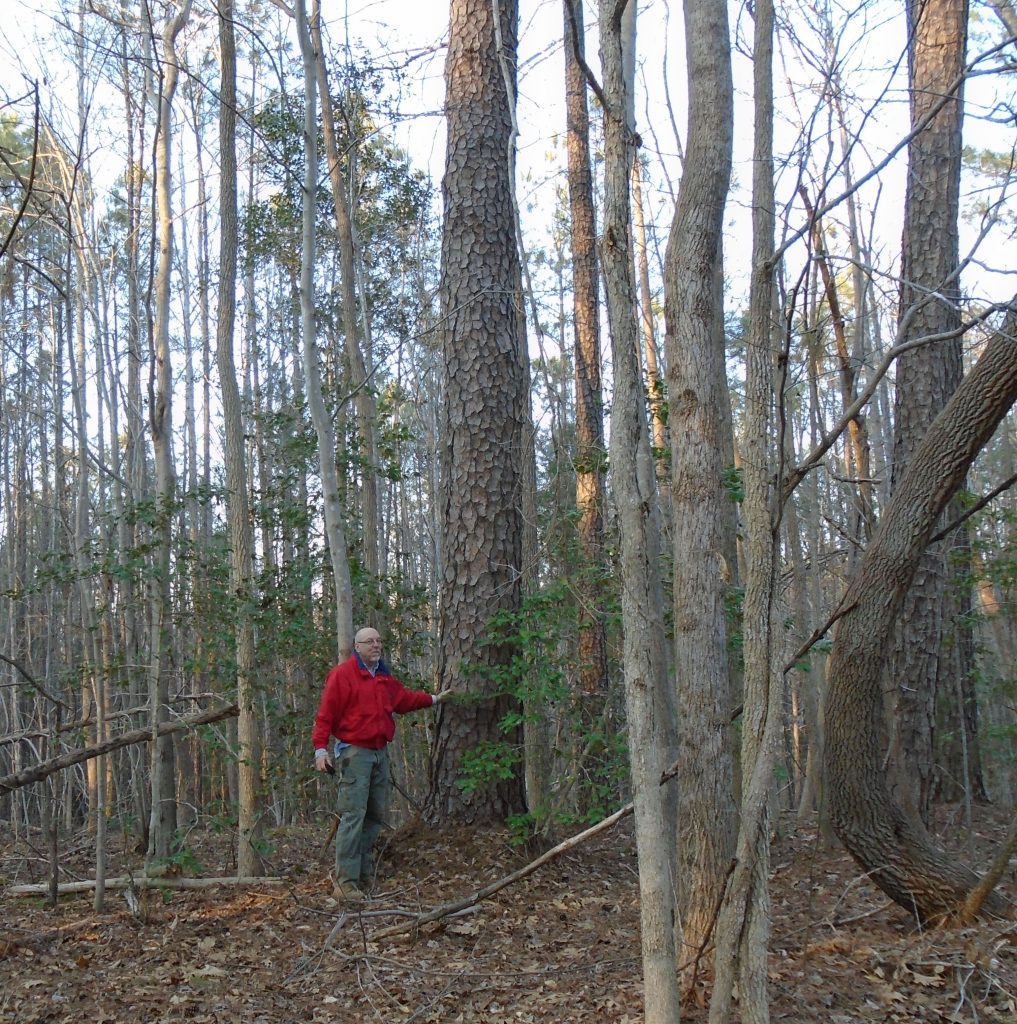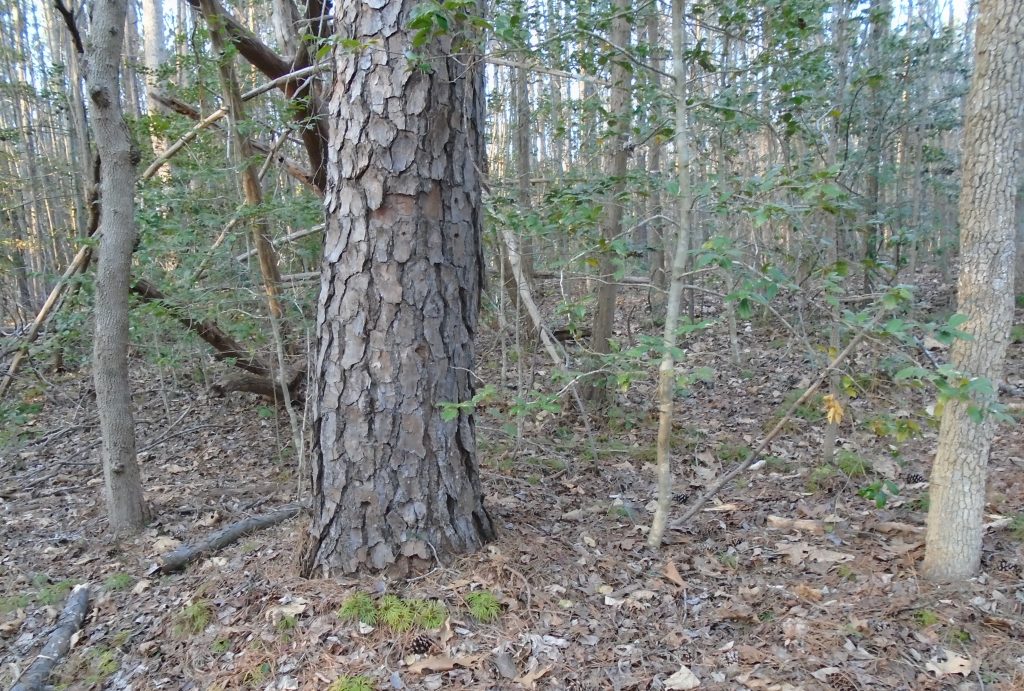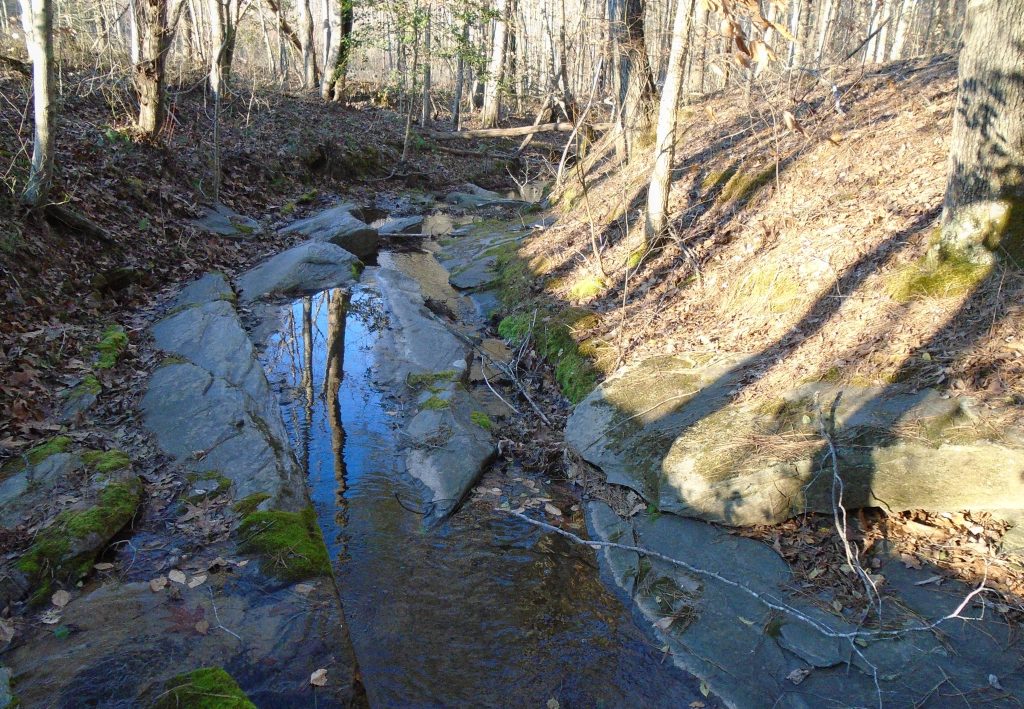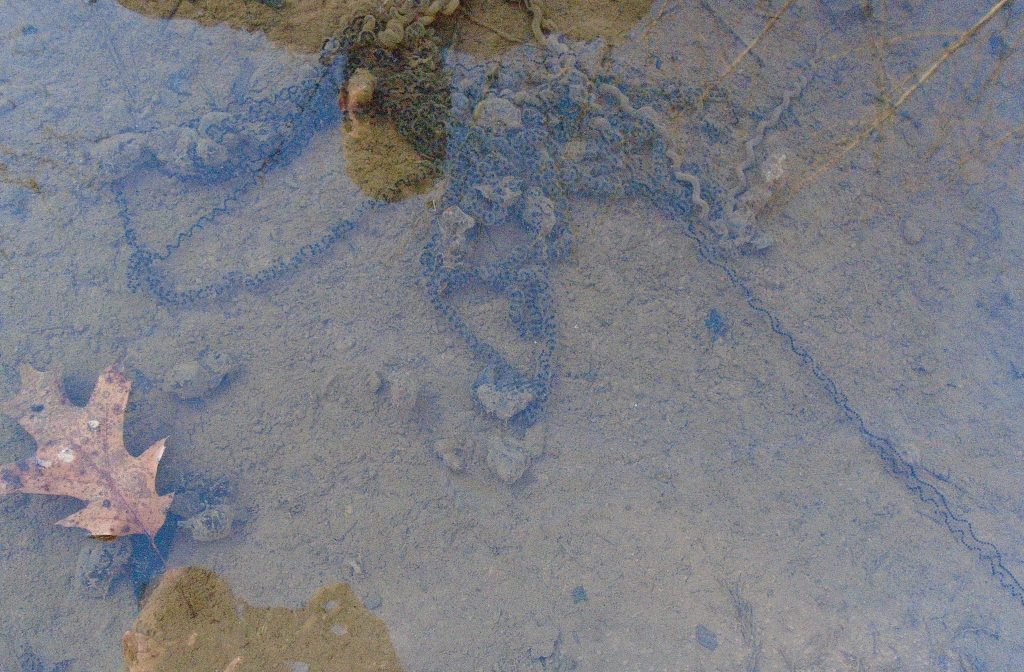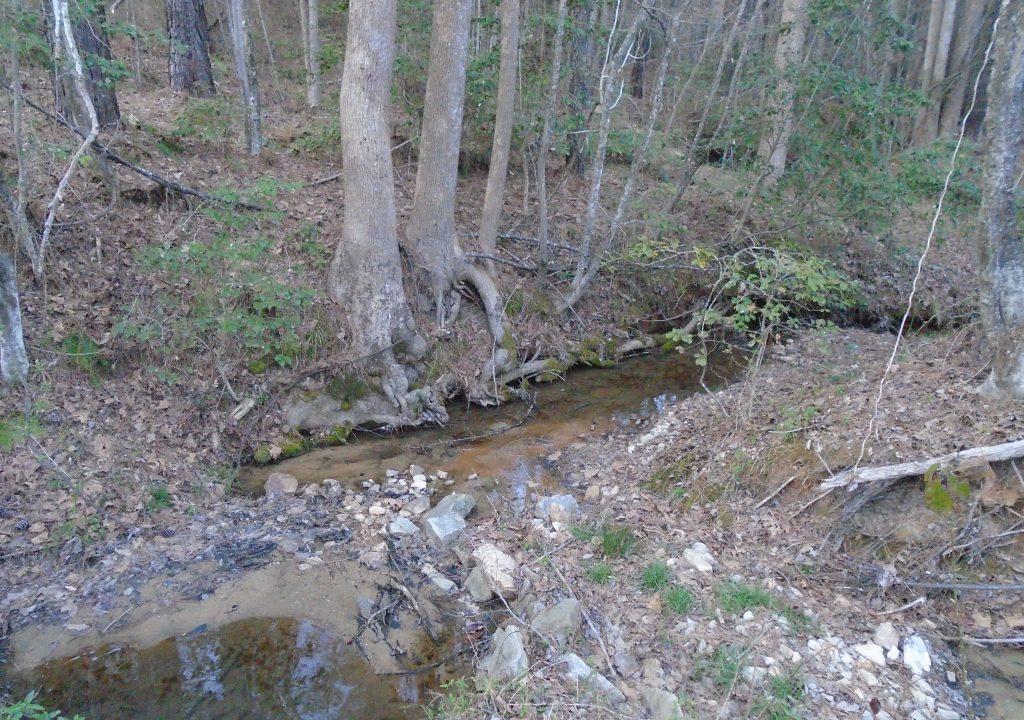Clean water is a forest product. A forest slows runoff and filters the water. I was reminded of that looking at our stream management zones. These are areas near streams that we mostly leave in natural forest to protect water quality.
Went down to the farms today, along with Alex & his friend Colin. We walked around on the Brodnax farm. I rarely do the full circuit. Showing them the farms gave me a chance to get in touch a little more myself. You can in the photos that the SMZs are doing okay.
The first picture is a big shortleaf pine with me to show scale. Shortleaf pine grow slowly. I do not know the precise age of the trees in the big shortleaf in the grove, but I am guessing that they are at least 70 years old, which indicates that this land has not been cleared at least since the 1940s, before I was born anyway. Shortleaf pine can live more than 300 years. Unlike most pines, they tend to persist in mixed hardwood forests, often in association with oaks as you see here. Notice the unique bark on the shortleaf. It is one of the easiest ways to identify them. It is kind of like alligator skin, as you see in picture #2.
Next shows toad eggs in an ephemeral pond. Colin told me that they were toad, not frog eggs because they are in that kind of chain. I don’t know about that. I do know that amphibians need these sorts of temporary ponds to reproduce and that such ponds are getting harder for them to find, as people make sure their yards are neat, without mud puddles. The pond must be permanent enough (at least a couple months) to let the amphibians develop and move out, but not so permanent for a resident fish population that eats the eggs or tadpoles. This pond is fed by a seepage from the woods above. Below it runs into the creek, so I think this will fit the bill.
The other two photos show water in the creeks. It looks clean to me, so our woods are doing their job to protect water quality. We are part of the Chowan watershed via the Meherrin River in Brunswick County. The water eventually ends up in Albemarle Sound in North Carolina.

